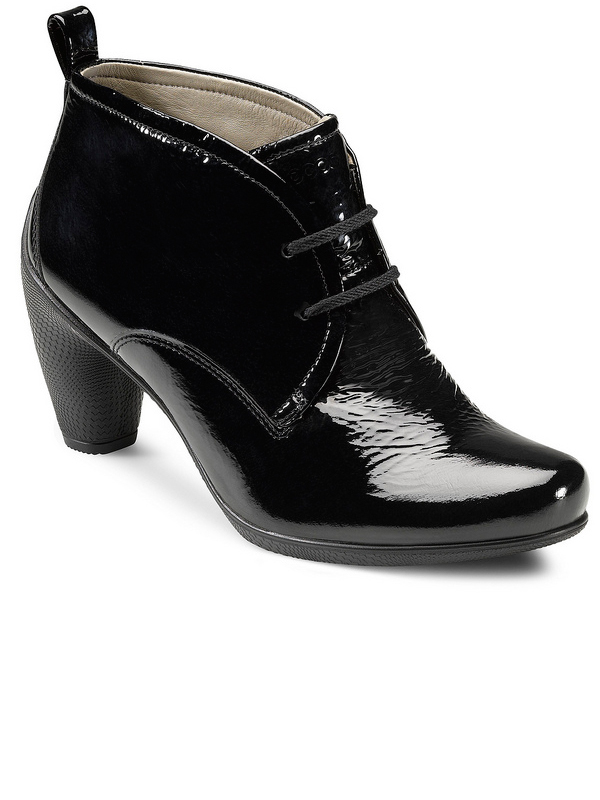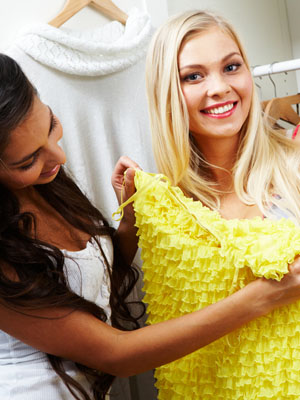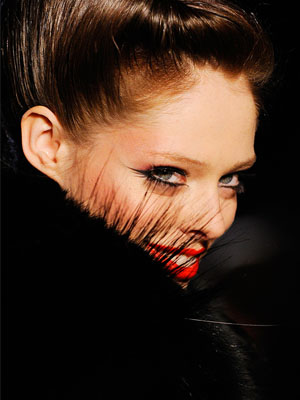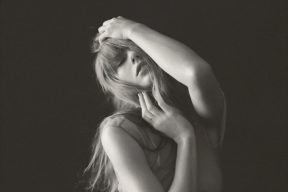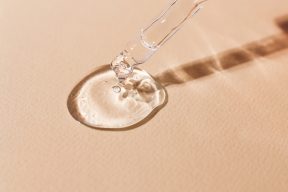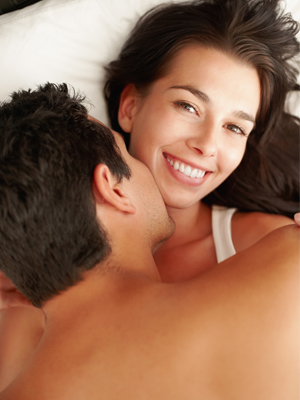Part of an ongoing series of 29Secrets stories, taking a deep dive into the history of legendary beauty products and iconic fashion and pop culture moments…
By Christopher Turner
Illustration by Michael Hak
Audrey Hepburn’s character Holly Golightly in Blake Edwards’ 1961 romantic comedy Breakfast at Tiffany’s is often referenced as the epitome of elegance and sophistication, mostly thanks to the clothes she wears. Throughout the film, her wardrobe includes everything from cute cocktail dresses to casual outfits and trench coats – but one outfit defines the lovable character and has ultimately become one of the most iconic looks in cinematic history, and one of the most influential dresses of the 20th century. It’s the black satin sheath, designed by Hubert de Givenchy, seen in the opening scene of the film.
While Coco Chanel is credited with making the little black dress a wardrobe staple, it was Hepburn who made the LBD popular in the ’60s and ’70s by wearing the iconic black dress in the film. The timeless dress was the result of a collaboration between the actress and the French designer, who considered the actress his muse. In fact, the two were close friends, Hepburn often referring to the designer as her “best friend” while he considered her his “sister.”
Riccardo Tisci, the creative director of Givenchy from 2005–2017, once said of the dress: “It was 1961 and this dress is in a way very ’60s. The front is severe, elegant, very clean, but at the back there is the very interesting neckline, somewhere between ethnic and Parisian; a softness that other designers in that time didn’t have.”
But, surprise: the facts behind the dress’s design aren’t as clean-cut as the dress itself. Here’s the story of the friendship between the designer and his muse, and of the legendary long black satin dress that was tailor-made for the actress for the classic film.
The enduring friendship
French couturier Hubert de Givenchy, founder of the Givenchy brand, was close friends with Audrey Hepburn for 40 years. It was a friendship that developed from the close collaborations on the elegant clothes she wore in most of her films and public appearances.
One of fashion’s most famous friendships actually started over a misunderstanding. Givenchy had just opened his tiny couture house in Paris after working at Schiaparelli, and was told that a Miss Hepburn would be coming into the store to take a look. Thinking that it was Katharine Hepburn whom he was going to meet, Givenchy was surprised when a tiny young woman wearing Capri pants, a T-shirt and ballet flats entered his shop. Hepburn had been sent to Paris by director Billy Wilder to select couture for her role as Sabrina Fairchild in his upcoming film, Sabrina (1954), also starring Humphrey Bogart and William Holden. Initially Wilder had intended Paramount costume designer Edith Head to create the costumes for the film, but Hepburn rejected the designs and instead asked to wear “a real Parisian dress” for the part.
“I said I had no time,” Givenchy recalled of their initial meeting. “I was in the middle of designing my second collection and I didn’t have too many workers then, but we had dinner that night and at the end of dinner I told her, ‘I will do anything for you.’” In the end, Givenchy gave Hepburn the run of samples that he already produced for his second show for her to wear in the film.
After dressing Hepburn for her star turn in Sabrina, Givenchy became a fixture in her increasingly successful career. He designed the clothes she would wear in almost all of her future films, including Funny Face (1957), Love in the Afternoon (also 1957), Charade (1963), Paris When It Sizzles (1964), How to Steal a Million (1966), Two for the Road (1967) and, of course, Breakfast at Tiffany’s. It was a contract stipulation on which she insisted.
Givenchy also dressed Hepburn off-screen, from Cecil Beaton’s photo shoots for Vogue, to awards ceremonies, to her private life – Hepburn was rarely seen wearing another designer’s clothes. Returning the favour, Hepburn was the face of the designer’s first perfume, L’Interdit, in 1957.
Hepburn trusted Givenchy’s impeccable taste and the simplicity of his designs, and their partnership elevated her and helped her become one of the most loved, and fashionable, Hollywood icons of all time. Hepburn would often say that it was Givenchy’s designs that gave her the confidence she needed to find success throughout her career. “When I first went to Givenchy in 1953, I was still in homemade dresses,” she would later recall. “The beautiful dresses always seemed like costumes to me.”
The actress and designer remained close friends, and collaborators, for the remainder of Hepburn’s life. When she died on January 20, 1993, from a rare form of abdominal cancer, Givenchy was a pallbearer at her funeral. His final tribute to his dear friend.
Givenchy retired from fashion design in 1995, two years after the death of his friend. He died in his sleep on March 10, 2018, at the age of 91.
![]()
Breakfast at Tiffany’s
Breakfast at Tiffany’s was directed by Blake Edwards and written by George Axelrod, adapted from Truman Capote’s 1958 novella of the same name. Capote originally wanted Marilyn Monroe for the role of Holly Golightly, a naive society girl who falls in love with a struggling writer, but the studio opted to go with Hepburn instead. Givenchy, as stipulated in Hepburn’s contract, signed on to create the costumes for the film.
Filming on Breakfast at Tiffany’s began on October 2, 1960, and it was theatrically released by Paramount Pictures on October 5, 1961, to both commercial and critical success (it was nominated for five Academy Awards, winning two).
Interestingly, filming began with the movie’s most famous scene, on New York City’s Fifth Avenue outside the Tiffany & Co. flagship store. According to one report, the film’s on-location opening sequence, in which Holly Golightly gazes into a Tiffany’s display window, was extremely difficult to shoot. It was a simple concept, but crowd control, Hepburn’s dislike of pastries, and an accident that nearly resulted in the electrocution of a crewmember are all said to have made capturing the scene a challenge. However, another report claims that the sequence was captured rather quickly due to the good fortune of an unexpected traffic lull.
![]()
If you haven’t actually seen Breakfast at Tiffany’s, in the opening scene of the movie, a taxi stops in front of the Tiffany & Co. boutique and Holly Golightly steps out of the cab wearing a black sheath of utmost simplicity. The floor-length dress is accessorized with an elaborate Roger Scemama necklace, a brooch in her hair, a pair of oversized black sunglasses and a pair of black elbow-length gloves (all personally selected by Givenchy). She sips her coffee and takes a bite of her croissant while gazing at the jewellery behind the shop window.
As the Washington Post points out, it’s morning, breakfast time, and yet this is clearly an evening party dress. That, and her elegance, suggests “she has been out all night and she does not look wrecked. In fact, she looks splendid.”
In her 1999 book, Audrey Style, Pamela Keogh Clarke writes: “The Hepburn Givenchy partnership reached the apogee of refined elegance as Holly Golightly’s hangover chic caused a run on triple strand faux pearl necklaces, sleeveless dresses and oversized dark sunglasses that continues to this day.”
The scene is only a few minutes long, but the look was oh-so-feminine, and the dress made the ultimate statement. The sleeveless, floor-length gown with fitted bodice was embellished at the back with distinctive cut-out décolleté; the skirt was slightly gathered at the waist and slit to the thigh on one side.
Givenchy’s black cocktail-style frock was the most modern interpretation of the little black dress since Coco Chanel’s introduction of the concept back in the 1920s. Kind of.… As it turns out, Givenchy is not completely responsible for his most famous look. Here’s the little-known story: Givenchy designed three copies of a shorter black dress for the film’s opening scene, and Hepburn took two of the copies back to Paramount. However, Paramount execs felt that the dress revealed too much of Hepburn’s leg and deemed it unsuitable for the movie. Legendary costume designer Edith Head was called in to redesign the lower half of the dress, which is how we got the elegant full-length number that appears in the film.
Yes, Head’s revamped version of Givenchy’s dress is the one that was ultimately used in the film and in all of the promotional materials used for the film – meaning that despite the fashionable legacy, none of the original dresses created by Givenchy were used.
Costume designer Renie Conley remembered observing Head taking one of Givenchy’s gowns apart to create a copy. “It was full of horsehair stuffing and lead weights to make it fall a certain way.”
Of course, the couturier also designed a second sleeveless black dress made of wrinkled silk for the film. The second LBD, with its slightly flared frilly skirt, appears later in the film, when Holly Golightly wears it with a wide-brimmed hat with an enormous cream silk bow, low-heeled alligator shoes, long opera gloves and, again, oversized black sunglasses.
![]()
But, back to the famous little black dress worn in the film’s opening scene. The shorter, original version of the Givenchy black dress, which was never worn in the film, still has a life of its own, currently residing in the House of Givenchy’s archives. Another copy lives at The Garment Museum in Madrid, and the third was ultimately sold at a Christie’s auction in 2006, purchased by an anonymous buyer by telephone for £467,200 (approximately $798,000 CAD), with the profits being donated to the City of Joy Aid to benefit those in need in Calcutta (now called Kolkata), India. Before the sale, actress Natalie Portman – often called the modern-day Hepburn – channelled her inner Holly Golightly and wore the dress in a photo shoot for the cover and inside pages of the November 2006 issue of Harper’s Bazaar.
![]()
“I did feel very elegant suddenly,” Portman told the magazine. “I mean, you can’t possibly measure up to Audrey Hepburn; there’s no comparison. But the elegance that she exuded was transmitted to the dress, you know, the feeling, the emotion of it.”
The enduring legacy
So, Hubert de Givenchy isn’t 100 per cent responsible for one of the most famous and frequently reproduced dresses of all time. Regardless, his little black dress has reinforced its status as a pop culture and fashion staple. Proof of its enduring prominence, the dress remains well-referenced, regularly revamped by fashion designers, popping up in countless movie montages and yearly as one of the most popular Halloween costumes, a nod to Hepburn’s legacy of simple, timeless glamour.
“I should be a stylish Holly Golightly. Even if that’s all I can contribute,” Hepburn once said. “I’m an introvert.… Playing the extroverted girl in Breakfast at Tiffany’s was the hardest thing I ever did.”
It may have been the hardest thing Hepburn ever had to do, but together with her friend and collaborator Hubert de Givenchy, she ultimately created a legacy of fashion. And we’re thankful for that.
![]()
Want more? You can read other stories from our The Story Of series right here.

